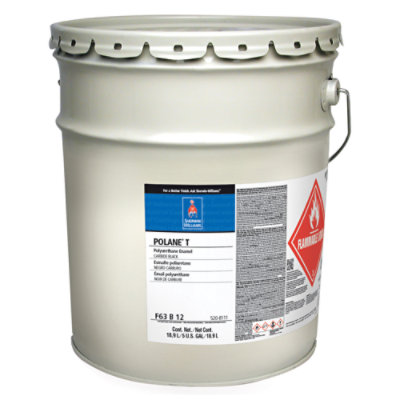Good morning. I've sanded the paint off an old 18ft aluminum boat with 80 grit (slow process), and will do a quick round with 220 grit. I've read the next steps are Alumiprep 33, then Alodine 1201, then Zinc Chromate (is this the same as an Epoxy primer, or do you Zinc Chromate THEN put a separate epoxy primer?), then topcoat. I plan on using Totalboat products for the finish.
Does anyone know where to source the Alumiprep 33 or Alodine 1201 at a brick and mortar store in South Florida? I saw I could order them from Aircraft Spruce but it's $52 for a gallon of Alodine and $44 for a gallon of Alumiprep then $68 shipping.
Also has anyone used epoxy primer and topside paint as bottom paint on an aluminum boat that will be used in saltwater and never be in the water longer than 24hrs? Or is bottom paint necessary. This paint job is getting expensive
Aircraft alum. parts get Alodine which is a chemical etch of the surface....and Zinc Chromate is a primer paint for aluminum. I never Alodined large parts as the process was to dip a raw component in a solution for a period of time, let the acid cut into the surface and remove. ZC on the other hand is a primer especially developed for protecting sheet aluminum and can be sprayed on.
I would certainly think that ZC would be your best bet for a boat hull and then epoxy paint. I had a 1965 Starcraft 18' I/O Holiday model that I restored. Had been partially submerged in a marina for quite awhile and was partially submerged.....I had to be out of my mind at the time but I had it in my head that I wanted one and here one was....I was blindsided. Had yellow engine oil, a crack in the side of the block (JB Weld fixed) and a worn out outdrive including having to build back aluminum housing parts with JB Weld that had been corroded away to get some seals a place to seal...and I do remember, in the mid 1980 time frame of paying $1600 for the thing.....had to be out of my mind!!!!!!!!
I stripped out everything but the aluminum hull and fore deck and took it to a Dallas commercial sand blasting facility and the process included sandblasting the hull where they hung it up on a gantry crane and blasted it.....carefully as blasting on a commercial level can punch through the hull...but they knew what they were doing. They then washed it, let it dry, rolled it (rollers on the long surpentine crane) into a paint shed, closed the door and applied one coat of a 2 part white epoxy paint. Having sandblasted it initially setup the surface to readily take and hold paint....without any primer or Alodine solution being applied. I don't recall the cost but it was very reasonable...had to be as I was short on funds at the time raising 4 kids with their mother. After the restoration, I had the boat for at least 10 years and gave it to sons who used it for I don't know how long. Never had a minutes trouble with paint peeling or any type of problem.
While I'm telling the story, while in Dallas dropping off the boat, nearby was a commercial hot dip galvanizing shop that had huge vats into which they put cross country high voltage power line tower parts to galvanize prior to constructing the towers. I disassembled the trailer on their lot down to what was coatable, a fork lift came over and picked up the trailer, took it to a tank, a crane picked it up and dumped it in a tank. Took them about 30 minutes for that.
I reassembled the the thing on the lot and drove it home. Put new bunks on it and what ever else it needed and a few days later came back and picked up my freshly painted boat....I do remember the cost for the dip and it was $30. The foreman said that my case was most unusual but he decided to help me out and do it anyway and after finishing said that he under bid the job.......I mentally agreed. I did appreciate it.
























